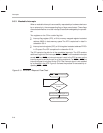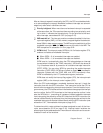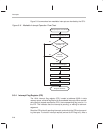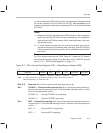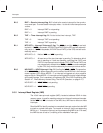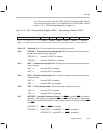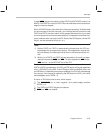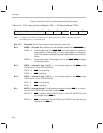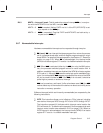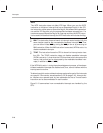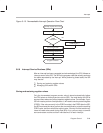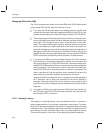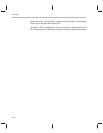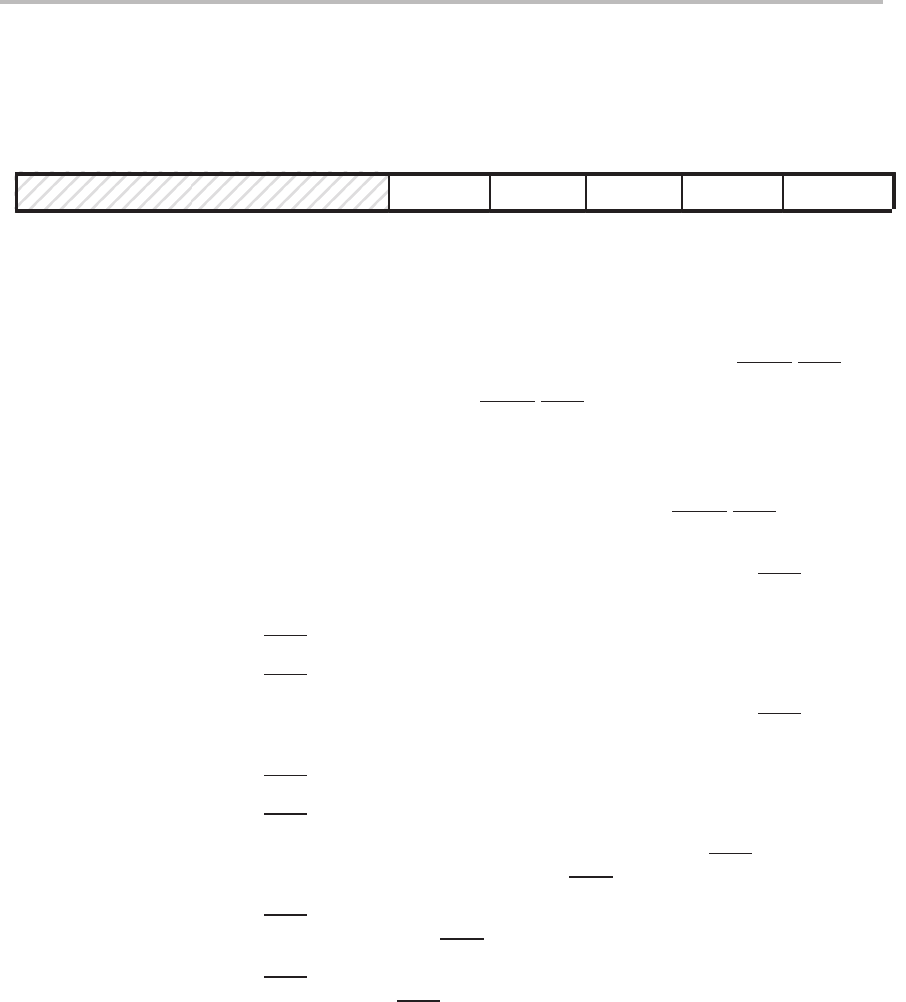
Interrupts
5-26
Figure 5–9 shows the ICR, and bit descriptions follow the figure.
Figure 5–9. ’C2xx Interrupt Control Register (ICR) — I/O-Space Address FFECh
15 5 4 3 2 1 0
Reserved MODE FINT3 FINT2 MINT3 MINT2
0 R/W–0 R/W1C–0 R/W1C–0 R/W–0 R/W–0
Note: 0 = Always read as zeros; R = Read access; W = Write access; W1C = Write 1 to this bit to clear it to 0;
value following dash (–) is value after reset.
Bits 15–5 Reserved. Bits 15–5 are reserved and are always read as 0s.
Bit 4 MODE — Pin mode. Bit 4 selects one of two possible modes for the HOLD
/INT1 pin.
MODE = 0
Double-edge mode.
The HOLD/INT1 pin is both negative- and positive-
edge sensitive. A falling edge or a rising edge triggers an interrupt re-
quest. This mode is necessary for proper implementation of a HOLD op-
eration.
MODE = 1
Single-edge mode.
A falling edge (only) on the HOLD/INT1 pin triggers
an interrupt request.
Bit 3 FINT3 — Interrupt 3 flag. If MINT3 = 1, an interrupt request on the INT3
pin sets
FINT3 and bit 1 of the IFR (INT2/INT3).
FINT3 = 0 INT3
is not pending.
FINT3 = 1 INT3
is pending.
Bit 2 FINT2 — Interrupt 2 flag. If MINT2 = 1, an interrupt request on the INT2
pin sets
FINT2 and bit 1 of the IFR (INT2/INT3).
INT2 = 0 INT2
is not pending.
INT2 = 1 INT2
is pending.
Bit 1 MINT3 — Interrupt 3 mask. This bit masks the external interrupt INT3
or, in conjunc-
tion with the INT2/INT3 bit of the IMR, unmasks INT3
.
MINT3 = 0 INT3
is masked. Neither FINT3 nor bit 1 of the IFR (INT2/INT3) is set
by a request on the INT3
pin.
MINT3 = 1 INT3
is unmasked. Flag bits FINT3 and INT2/INT3 are both set by a
request on the INT3
pin.



